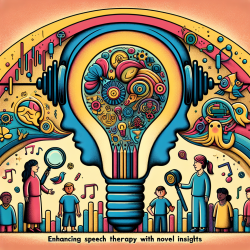Introduction
In the field of speech-language pathology and healthcare, creating environments that foster inclusivity and support is paramount. The research article titled “As a patient I do not belong to the clinic, I belong to the community”: co-developing multi-level, person-centred tuberculosis stigma interventions in Cape Town, South Africa, offers valuable insights into reducing stigma through community-driven approaches. This blog explores how practitioners can apply these findings to improve outcomes for children and other vulnerable populations.
Understanding the Research
The study employed a community-based participatory research (CBPR) approach to develop person-centered stigma interventions. By engaging TB-affected community members and health workers in Cape Town, the research aimed to address the barriers posed by stigma at multiple socio-ecological levels, including individual, interpersonal, institutional, community, and policy levels.
Key Findings and Implications for Practice
- Individual Level: Education and counselling were identified as crucial components to dispel misconceptions and reduce internal stigma. Practitioners can enhance counselling sessions by incorporating lived experiences and positive messaging to build resilience.
- Interpersonal Level: Support groups and family-centered counselling can help dispel myths and foster support. Practitioners should encourage the formation of support networks and provide resources for family education.
- Institutional Level: Training for health workers, informed by TB survivors, can reduce enacted stigma. Practitioners should advocate for training programs that emphasize empathy and understanding of patient experiences.
- Community Level: Awareness-raising events and educational initiatives can improve community knowledge and reduce stigma. Practitioners can collaborate with community leaders to organize such events.
- Policy Level: Restructuring care delivery models to reduce visibility of TB diagnosis can decrease stigma. Practitioners should support policy changes that promote patient-centered care and task shifting to community health workers.
Applications in Speech-Language Pathology
For speech-language pathologists, these findings underscore the importance of creating supportive environments for children with communication disorders. Practitioners can implement similar community-driven approaches to address stigma associated with speech and language difficulties. By fostering inclusive communities and advocating for policy changes, speech-language pathologists can help ensure that all children receive the support they need to thrive.
Encouraging Further Research
The study highlights the need for ongoing research into stigma reduction interventions. Practitioners are encouraged to engage in research that explores the application of these findings in different contexts, particularly in the field of speech-language pathology. By contributing to the evidence base, practitioners can help develop more effective interventions and improve outcomes for children and other vulnerable populations.
To read the original research paper, please follow this link: “As a patient I do not belong to the clinic, I belong to the community”: co-developing multi-level, person-centred tuberculosis stigma interventions in Cape Town, South Africa.










